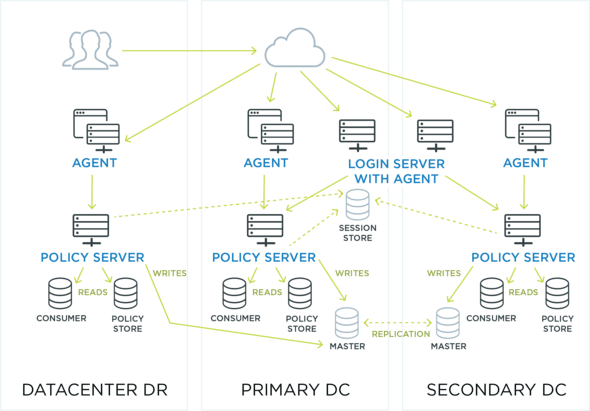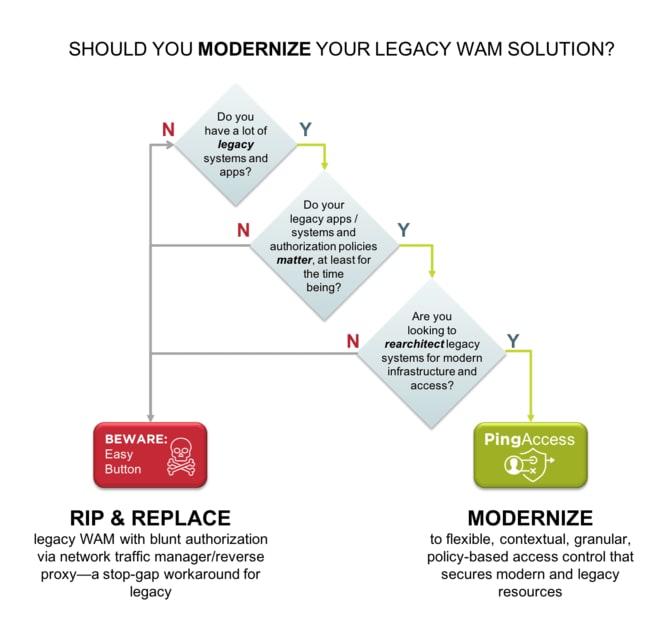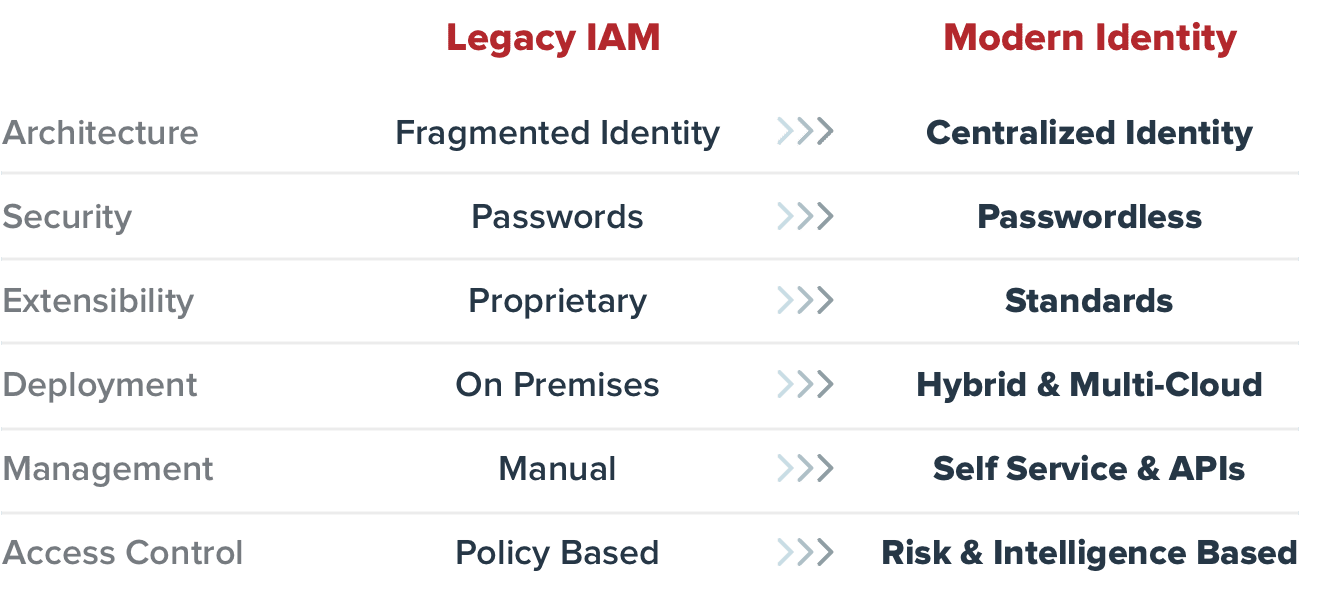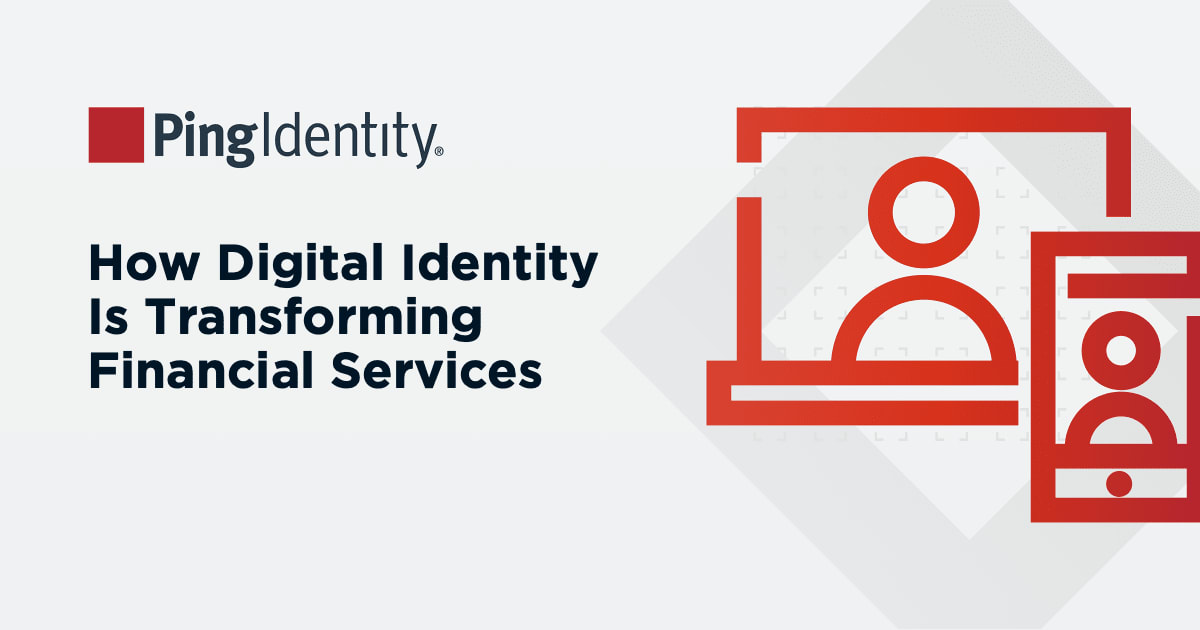Given the investment you have already made in your legacy web access management (WAM) solution, you may be hesitant to move to a newer solution. Top reasons to make the move include:
Extended Capabilities with Modern IAM Solutions
Users need to access on-prem, SaaS, API and/or cloud services from any device at any time. Modern IAM solutions are broader in scope than legacy options and offer centralized administration.
Capabilities of IAM include:
With a bundled single sign-on (SSO) and multi-factor authentication (MFA) solution, your IT team only needs to learn one new tool for centralized administration. Modern IAM options are available for customers (CIAM), employees and partners, which can be integrated for a holistic solution.
Scalability and Lower Costs with Modern IAM
IAM solutions are available for hybrid environments, making the transition to the cloud easier. A cloud-based solution, cloud IAM, eliminates the need for expensive, on-prem equipment and in-house experts. IAM can also be purchased on a subscription basis with an Identity as a Service (IDaaS) provider, allowing you to scale quickly for new customers and employees. WIth improved authentication and access control, you limit threats and attack vectors.
Lack of Vendor Support Increases Risks and Costs for Legacy WAM
Vendors have stopped investing in older platforms, which puts the burden on your team to build and maintain custom integrations. It can be difficult to find experts to work on legacy products, which are more vulnerable to security flaws and the latest threats and attack vectors. Regulatory compliance can also be a challenge with legacy systems, and penalties for non-compliance can be expensive and damage your reputation.
Reduced Speed and Agility with WAM Systems
WAM cannot easily bridge between on-premises and cloud-based resources, which limits your deployment, infrastructure architecture options and ability to integrate with newer solutions. WIthout WAM vendors investing in new products and services, your ability to provide employees, customers and partners with seamless, secure access to resources will continue to suffer. Newer authentication technologies, such as Google Authenticator and Touch ID, and customer engagement tools may not be compatible with legacy systems.
Modern IAM Improves the User Experience
Modern IAM improves the employee and customer experience and increases workforce productivity. IAM allows for faster rollouts of new apps and services, and a personalized customer journey. With SSO, IAM also reduces reliance on passwords for multiple accounts, minimizing the need for frustrating, time-consuming password resets. Modern IAM also supports MFA and the shift from passwords to passwordless authentication.
Modern IAM Supports Evolving Industry Protocols
Modern IAM solutions work with standard industry protocols, including OAuth 2.0, SCIM, FIDO2, JWT, and OpenID Connect. These protocols are used to facilitate token-based authentication and the move to passwordless authentication.






